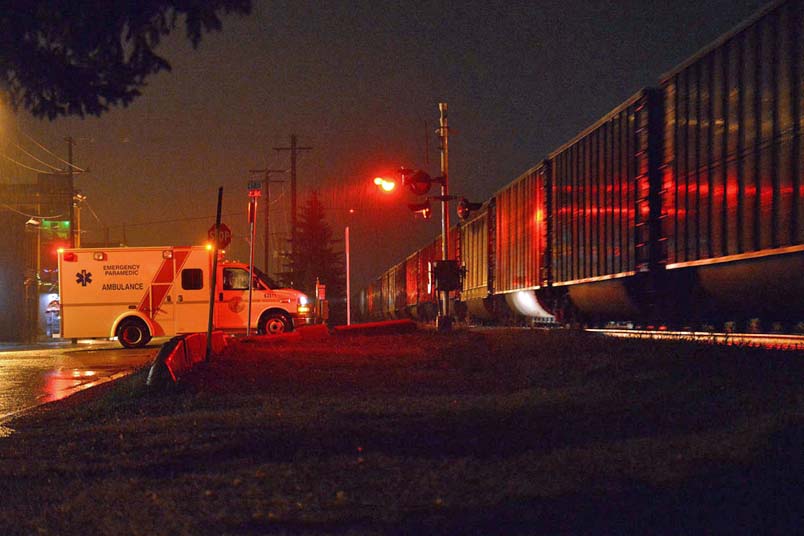
Fernie British Columbia - Multiple times a day, the communities of Ridgemont and beyond are isolated and unreachable by medical
personnel.
Trains are commonplace in the Elk Valley, and an integral part of local industry.
They are the lifeline of many industries across Canada.
The age-old train lines here have seen many cars pass over them, coal, canola, lumber, ammonia, to name a few.
Through Fernie, the train line runs parallel to downtown and acts as a divider between commercial (northwest) and residential (southeast).
Without trains, the Elk Valley's life blood of coal, and exports from Alberta, would never reach consumers on the coast.
However this train line also comes with challenges for those living on the other side of the railroad crossing.
Two train crossings in the Fernie area are used regularly to reach the residential areas of Ridgemont, Pine Avenue, Coal Creek, Montane, the mobile home park,
Castle Mountain subdivisions, an apartment complex, as well as Rocky Mountain Village senior's care home.
Also included in this area is the Fernie Aquatic Centre, bike park, and in the winter, outdoor skating rink.
This area is growing quickly, with developments underway, subdivisions extended, and more homes built every year.
Of the approx. 5,250 people that live in Fernie, about 1,870 are temporarily isolated when the train passes through town, four times a day or
more.
This number does not include the residents of Cokato, which borders the City of Fernie and is also accessible using these crossings.
When passing through town, the train, which stretches about three kilometres in length, blocks each train crossing for approximately four minutes.
In addition to this, it blocks both main train crossings simultaneously for a period of a few minutes, and will sometimes stop for an indeterminate period of
time.
According to CP, an average train in the Elk Valley is 152 cars long, at 67 feet per car, making them about 10,000 feet or 3.048 kilometres in
length.
A spokeperson for CP explained that between four to six trains pass through the Valley in a 24 hour period, but that the number of trains are determined by how
much product the mines export in a given day.
On 7 Oct 2019 at 22:58 BCEHS paramedics were dispatched to a call at Rocky Mountain Village in Fernie, a retirement home located 1.5 kilometres from the
paramedic station, and another 1.15 kilometres past the railroad crossing.
According to a statement by BC Emergency Health Services, the ambulance responded lights and sirens through downtown, but stopped short of the tracks when they
saw crossing lights flashing and arms lowering.
The ambulance turned off its sirens and stopped, the only vehicle in line to cross the tracks.
About four minutes later once the train had passed, the arms lifted and the ambulance proceeded the remaining distance to the call.
They arrived at the scene at 23:08.
No details were provided with regards to the outcome of the call.
According to a BCEHS spokesperson, the three train track crossings in the city of Fernie are something all emergency responders take into
consideration.
The BCEHS spokesperson further explained that in the event a crossing is blocked by a moving train, it is usually quickest and safest for paramedics to wait at
the crossing and proceed when it clears.
If a train has stopped and blocked the crossing for an undetermined amount of time, the spokesperson explained that responding crews are to "use their
best judgement" and possibly reroute to another crossing.
However, the length of the trains make this difficult.
The two main crossings in Fernie are one kilometre apart.
With each train three kilometres long, both crossings will be blocked for two kilometres of travel.
Phil McLachlan.
provisions in Section 29 of the Canadian
Copyright Modernization Act.

